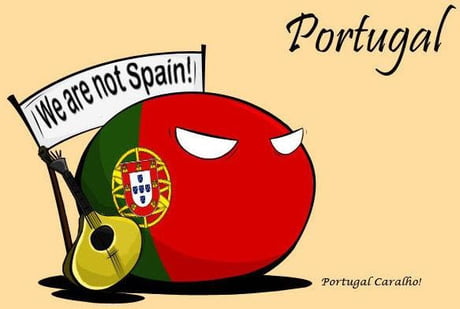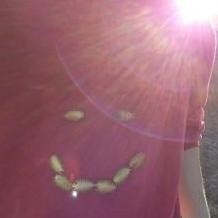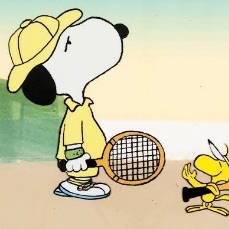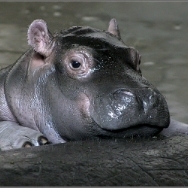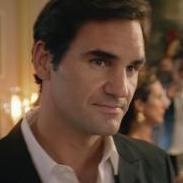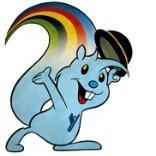Leaderboard
Popular Content
Showing content with the highest reputation on 03/17/2023 in all areas
-
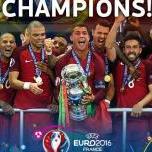
Totallympics Annual International Song Contest 2023
maestro and 6 others reacted to kungshamra71 for a topic
7 points -
Ladies and Gentlemen, Welcome to The Opening Ceremony of the 2023 Annual Totallympics International Song Contest!7 points
-
WHAT CAN YOU DO IN SPAIN? A recommendation from the organizing committee is to take advantage of the trip to Seville to get to know Spain. Did you know that Spain is the second country that receives the most tourists? In 2019, before the pandemic, an estimated 83.5 million people visited Spain. That's almost double the population! Although Spain is not a very large country in terms of size, you can find practically everything in it. From the wide white sand beaches of the Balearic Islands or Murcia to ski resorts in Sierra Nevada and the Pyrenees. We also have some desert areas, such as the Tabernas desert in Almería or the Maspalomas Dunes in Gran Canaria. If you prefer urban life there are also options for you. From big cities like Madrid and Barcelona to smaller cities but full of history like Toledo, Granada, Oviedo or Santiago de Compostela.6 points
-
VALENCIA BATS Valencia is a city located on the eastern coast of Spain, in the region of Valencia. It is the third largest city in Spain after Madrid and Barcelona, with a population of over 790,000 people. Valencia is known for its rich history, cultural heritage, and as a hub for trade and commerce. Valencia has a long and complex history, with evidence of human habitation dating back to the Neolithic era. The city was founded by the Romans in 138 BC and was named "Valentia Edetanorum." It played an important role in the Roman Empire as a strategic location for trade and commerce. During the Visigothic period, Valencia became an important center of Christianity and culture, and in the 8th century, it was conquered by the Moors. Under Moorish rule, Valencia became a major center of agriculture and trade. In 1238, Valencia was conquered by the Christian King James I of Aragon, marking the end of Moorish rule in the region. Valencia experienced a period of growth and prosperity during the Middle Ages, with the development of trade and the expansion of agriculture. In the 15th century, Valencia became a major center of arts and culture, with the emergence of the Valencian School of Painting and the construction of numerous palaces and public buildings. Today, Valencia is a vibrant and dynamic city, known for its cultural heritage, historic landmarks, and modern amenities. Its attractions include the City of Arts and Sciences, the Central Market, the Valencia Cathedral, and the Turia Gardens, among many others. Valencia is also famous for its cuisine, including paella, a rice-based dish that originated in the region. The bat is an important symbol of Valencia, and it can be seen on the city's coat of arms, flag, and many other emblems and logos. The origins of the bat as a symbol of Valencia are uncertain, but there are several legends and theories about its meaning. One legend suggests that during the 13th century, King James I of Aragon was besieging the city of Valencia, and the defenders of the city were able to repel his army by using bats as weapons. The bats frightened the horses and caused chaos among the enemy ranks, allowing the defenders to gain the upper hand. Another theory suggests that the bat is a symbol of good luck, as it is believed to have protected the city from a plague of locusts during the Middle Ages. According to the legend, the bats flew into the city and ate the locusts, saving the crops and preventing a famine. Whatever its origins, the bat has become an important symbol of Valencia and is celebrated in many ways. The city holds a festival called Las Fallas each year in March (this weekend), during which giant sculptures of bats and other figures are displayed throughout the city and then burned in a spectacular display of fireworks and flames. TYPICAL FOOD - LA PAELLA: La paella is the most famous dish from Valencia, and it has become the most popular dish in Spanish cuisine. It is a rice-based dish that is typically made with a variety of seafood, meat, or vegetables, depending on the region and the season. The classic Valencian paella is made with rabbit, chicken, green beans, white beans, and saffron, which gives the dish its characteristic golden color and unique flavor. Other variations may include seafood, such as shrimp, clams, mussels, or squid, or vegetables such as artichokes, peppers, and tomatoes. The preparation of paella is a traditional social activity in Valencia, often involving large groups of family and friends who gather around the dish as it cooks over an open flame. The rice is cooked slowly and evenly in a wide, shallow pan, allowing the flavors to blend together and the rice to develop a crispy crust on the bottom, known as socarrat. In addition to paella, Valencia is also known for its other traditional dishes, such as arroz al horno (baked rice), fideuà (a noodle-based dish similar to paella), and all i pebre (a seafood stew made with eels and potatoes). Other local specialties include horchata, a refreshing drink made from tiger nuts, and buñuelos, a type of fried dough pastry that is typically served with hot chocolate. Overall, the food of Valencia reflects the region's agricultural heritage, with an emphasis on fresh, local ingredients and traditional cooking techniques that have been passed down through generations of Valencian cooks. MEMBERS OF THE TEAM: LITHUANIA @Werloc SLOVENIA @justony NORWAY @vkristijan NEW ZEALAND @Wanderer6 points
-
THE SCOREBOARD GRAND FINAL SCOREBOARD 1 ARGENTINA 0 1 KAZAKHSTAN 0 1 BRAZIL 0 1 LITHUANIA 0 1 BULGARIA 0 1 MALTA 0 1 CHILE 0 1 MEXICO 0 1 CHINA 0 1 MOLDOVA 0 1 CROATIA 0 1 NETHERLANDS 0 1 CZECH REPUBLIC 0 1 NEW ZEALAND 0 1 DENMARK 0 1 NORWAY 0 1 FINLAND 0 1 POLAND 0 1 FRANCE 0 1 PORTUGAL 0 1 GERMANY 0 1 ROMANIA 0 1 GREAT BRITAIN 0 1 SERBIA 0 1 GREECE 0 1 SLOVAKIA 0 1 HUNGARY 0 1 SLOVENIA 0 1 INDIA 0 1 SPAIN 0 1 INDONESIA 0 1 SWEDEN 0 1 IRELAND 0 1 TUNISIA 0 1 ISRAEL 0 1 UKRAINE 0 1 ITALY 0 1 USA 0 Ladies and gentlemen, this concludes the Opening ceremony of the Totallympics Annual International Song Contest 2023. See you tomorrow at 9:00 (Central European Time)!4 points
-
EL ANACRONÓPETE - MIDDLE AGES ARTISTIC PROGRAM (2/6) During the Middle Ages, music in Spain was largely dominated by troubadours and minstrels. These performers traveled from town to town, entertaining audiences with their songs and instruments, and often performed in castles, palaces, and other noble residences. The music of this period was often improvised and performed in the vernacular language, reflecting the emergence of a distinct Spanish culture. One of the most significant musical genres of the Middle Ages was the Cantigas de Santa Maria, a collection of songs written in Galician-Portuguese, a language spoken in the northwest region of Spain. The Cantigas were written by King Alfonso X of Castile, who ruled from 1252 to 1284, and were dedicated to the Virgin Mary. The songs featured various musical styles, including monophonic and polyphonic music, and were often performed with instruments such as the vielle, a medieval string instrument similar to a violin. Another popular genre of music in medieval Spain was the Sephardic music of the Jewish community. The Sephardic Jews, who lived in Spain until their expulsion in 1492, had a distinct musical tradition that blended elements of Jewish, Arabic, and Christian music. The songs were often sung in Ladino, a language derived from Old Spanish and Hebrew, and were accompanied by instruments such as the oud, a lute-like instrument. The music of the Middle Ages in Spain was characterized by its simplicity and the use of modal scales. The melodies were often repetitive, and the lyrics were frequently focused on love, religion, and morality. Although the music of this period may seem primitive compared to later periods, it played an essential role in the development of Spanish music, setting the foundation for the emergence of new musical styles and genres in the centuries to come.4 points
-
PARADE OF NATIONS (1/4) ARGENTINA - ARGENTINA Artist: Babasonicos Jury Member(s): @konig BRAZIL - BRASIL Artist: Jão Jury Member(s): @titicow @vinipereira BULGARIA - BULGARIA Artist: Molec Jury Member(s): @Federer91 CHILE - CHILE Artist: Shirel Jury Member(s): @ManuCHIL CHINA - CHINA Artist: Air Jury Member(s): @Vic Liu CROATIA - CROACIA Artist: Swingers Jury Member(s): @dcro CZECH REPUBLIC - CHEQUIA Artist: MYDY Jury Member(s): @Hipooo DENMARK - DINAMARCA Artist: Blaue Blume Jury Member(s): @Agger @Wumo FRANCE - FRANCIA Artist: Juliette Armanet Jury Member(s): @Benolympique @Bohemia4 points
-
BARCELONA DRAGONS Barcelona is the capital city of the Catalonia region in northeastern Spain. The city has a long and fascinating history that can be traced back over 2,000 years. It was founded as a small Roman colony in the 1st century BC, and later became an important trading center during the Middle Ages. In the late 19th and early 20th centuries, Barcelona experienced a period of rapid growth and modernization, becoming the most important industrial and cultural center in Spain. During this time, many of the city's most famous landmarks were built, including the Sagrada Familia, the Park Güell, and the Gothic Quarter. Barcelona has also played an important role in modern Spanish history. In 1936, at the beginning of the Spanish Civil War, the city became a stronghold of the Republican forces and was heavily bombed by the Nationalists. After the war, Barcelona experienced a period of economic and cultural growth, becoming a center of the arts, literature, and music. Today, Barcelona is one of the most popular tourist destinations in Europe, attracting millions of visitors each year. The city is known for its stunning architecture, vibrant culture, and beautiful beaches. Dragons have played an important role in the history and culture of Barcelona. In fact, the dragon is the most iconic symbol of the city and can be found in many different forms throughout its streets and landmarks. The legend of the dragon of Barcelona dates back to the Middle Ages when the city was under the rule of the Count of Barcelona, Wilfred the Hairy. According to the legend, a fierce dragon had been terrorizing the people of the city, killing livestock and causing widespread destruction. In order to put an end to the dragon's rampage, Wilfred the Hairy decided to take action. He tracked down the dragon and fought it in a fierce battle that lasted for hours. Finally, he was able to slay the dragon and free the city from its reign of terror. As a result of his bravery, Wilfred the Hairy became a hero in the eyes of the people of Barcelona, and the dragon became a symbol of the city's strength and resilience. TYPICAL FOOD: Barcelona has a rich culinary tradition with a variety of delicious dishes that reflect the city's Catalan heritage. Some of the most popular foods in Barcelona include: Escalivada: A dish made with roasted vegetables, such as eggplant, red peppers, and onions, often served with bread. Fideuà: A seafood dish made with short noodles, similar to paella, but with noodles instead of rice. Botifarra: A type of sausage made with pork and spices, often served grilled or as part of a stew. Crema catalana: A creamy dessert similar to crème brûlée, flavored with cinnamon and lemon zest. Canelons: Pasta shells filled with a variety of meats, such as chicken or beef, often served as a Christmas dish. Coca de recapte: A type of flatbread topped with roasted vegetables, such as eggplant, peppers, and onions. Barcelona is also known for its wide variety of fresh seafood, which can be found in many of the city's restaurants and markets. The city is also home to many excellent wineries, producing a variety of local wines that pair well with Catalan cuisine. MEMBERS OF THE TEAM: GERMANY @catgamer BULGARIA @Federer91 MEXICO @mrv86 HUNGARY @Vektor DENMARK @Wumo @Agger4 points
-
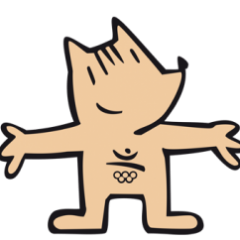
Totallympics Annual International Song Contest 2023
kungshamra71 and 3 others reacted to Cobi for a topic
By the way, the Opening Ceremony will take place tomorrow Friday 17th at 20:30 (Central European Time). It will last between 60 and 75 minutes and will have a traditional structure starting with the Parade of Nations, an artistic section as the main part of the ceremony and it will finish with the protocolary part, including the Oaths and the presentation of the Scoreboard for Saturday's Grand Final. The ceremony, in line with the rest of the edition, will showcase Spanish culture and history and it will also celebrate the Jubilee Edition of the Totallympics International Song Contest.4 points -
MADRID BEARS Madrid is the capital and largest city of Spain, located in the center of the Iberian Peninsula. The city has a long and rich history, dating back to the 9th century. In the 16th century, Madrid became the capital of Spain under the reign of King Philip II, who made the city a center of culture and politics. During this time, many of Madrid's most famous landmarks were built, including the Royal Palace of Madrid and the Plaza Mayor. Throughout the centuries, Madrid has played an important role in Spain's history, including during the Spanish Civil War in the 1930s. The city was heavily bombed during the war, but it was later rebuilt and has become one of Europe's most vibrant and modern cities. Today, Madrid is home to over 3 million people (6.5 million if we consider the metropolitan area) and is known for its rich culture, art, and cuisine. It is also one of the world's most important financial centers and is home to many multinational companies and organizations. Tourists flock to the city to explore its historic landmarks, including the Prado Museum, the Retiro Park, and the Puerta del Sol. The bear is a symbol of Madrid because of a legend that dates back to the Middle Ages. According to the legend, the city's founder, King Alfonso VI, was out hunting in the forests near the city when he saw a group of bears. The sight of the bears inspired him to choose the area as the site for the city of Madrid. Over the years, the image of a bear has become closely associated with Madrid, and it is now the city's official emblem. The bear is often depicted standing on its hind legs and leaning against a tree, while eating the fruit from the tree with its front paws. This image can be seen on the city's coat of arms, on street signs, and in many other places throughout Madrid. TYPICAL FOOD: Madrid is known for its delicious and hearty cuisine, which includes a variety of traditional dishes. Some of the most popular dishes of Madrid include: Cocido Madrileño: A stew made with chickpeas, vegetables, and different types of meat, such as pork, beef, and chorizo. Huevos rotos: Fried eggs served on top of a bed of potatoes and sometimes ham or chorizo. Callos a la Madrileña: A stew made with tripe, chorizo, and morcilla (blood sausage). Bocadillo de Calamares: A sandwich filled with fried squid rings. Churros con chocolate: Fried dough pastries served with a thick hot chocolate dipping sauce. Patatas bravas: Fried potatoes served with a spicy tomato sauce. These dishes are often accompanied by a glass of tinto de verano (a refreshing wine-based drink) or a caña (small glass of beer). Madrid is also known for its tapas culture, where small plates of food are served with drinks in bars and restaurants, making it an excellent place to try a variety of traditional Spanish dishes. MEMBERS OF THE TEAM: ITALY @SteveParker@Pablita @Henry_Leon SERBIA @NikolaB POLAND @rybak UKRAINE @Illya SWEDEN @Belle4 points
-
You decide the outcome of the Team Event! For the first time in the history of the Totallympics International Contest, your choice will impact the final outcome of the Team Event. Before each Session, one user will have the option to pick a "Portada de la Feria" and a color that will determine the competition system of the Session. The first pannel is composed of six "portadas". "La portada de la feria de Sevilla" refers to the main entrance or gateway structure that is erected each year at the entrance to the Feria de Abril (April Fair) in Sevilla. The Feria de Abril is a week-long celebration that typically takes place two weeks after the Easter holiday. The design of the portada changes every year, but it typically features a large, ornate archway adorned with colorful decorations, lights, and floral arrangements. The portada serves as the main entrance to the fairgrounds and is a popular spot for visitors to take photos and gather before entering the fair. The design of the portada is often kept secret until it is unveiled to the public on the first day of the Feria de Abril. Each year, the portada is an important symbol of the fair and represents the spirit and traditions of the Andalusian people. Behind a portada is hidden one of these Ranking Methods that will determine how many and which nations will score points for their teams during the session. The amount of points obtained by a nation depends on their position in the scoreboard of the session, according to the table below: Top3 combined Top4 combined Highest and lowest team member 2nd and 3rd highest team member Last team member only Highest team member only There are 6 options and only 4 sessions, which means that 2 of them will not be used during the event! RANKING METHOD - WHAT IS HIDDEN BEHIND "LA PORTADA DE LA FERIA"? In addition to the Ranking Method, the teams can also obtain points through the Bonus Method. Each session there will be a different collective goal: Most points scored from a single jury Highest streak of juries giving at least 8 points to the team Highest number of votes (vote = appearance in the scoreboard) Collusion (the nation that has given the most points to teammates during the Session) - In case this bonus appears in Sessions 1 or 3, Sweden or Denmark will not be eligible to avoid having 2 nations of the same team voting. BONUS POINTS METHOD - PICK A COLOR PURPLE (Violeta) GREEN (Verde) BLUE (Azul) ORANGE (Naranja) The points assigned to each nation according to the Ranking Method is as follows. In case of a tie between two nations, the general tie-breakers procedures will be applied and if it's not possible to break the tie, then both teams will get the highest position: Ranking Points 1 70 2 66 3 62 4 58 5 54 6 50 7 46 8 42 9 38 10 36 11 34 12 32 13 30 14 28 15 26 16 24 17 22 18 21 19 20 20 19 21 18 22 17 23 16 24 15 25 14 26 13 27 12 28 11 29 10 30 9 31 8 32 7 33 6 34 5 35 4 36 3 37 2 38 1 The points assigned to each team according to the Bonus Points Method is as follows. In case of a tie, both teams will receive the highest position: Ranking Points 1 30 2 15 3 5 As usual, the table including what's behind each cell of the table will be sent to a neutral third party before the start of the event. In case you have any doubt or want to change something to have a more balanced format, please let me know. Good luck!3 points
-
EL ANACRONÓPETE - 20th & 21st CENTURY ARTISTIC PROGRAM (6/6) The 20th century was a time of significant change and upheaval in Spain, and its music reflected these changes. During this time, Spanish music saw the emergence of new styles and genres, as well as a renewed interest in traditional Spanish music. One of the most important musical styles to emerge in Spain during the 20th century was flamenco nuevo, which was characterized by its fusion of traditional flamenco music with contemporary styles such as jazz, rock, and pop. Flamenco nuevo was popularized by musicians such as Paco de Lucía, who was known for his virtuosic guitar playing, and Camarón de la Isla, who was known for his passionate singing. Another important musical genre to emerge in Spain during the 20th century was Spanish classical music. Spanish composers such as Joaquín Rodrigo, Manuel de Falla, and Xavier Montsalvatge continued to compose works that fused traditional Spanish music with contemporary classical styles. Additionally, Spanish opera saw a resurgence in popularity during this period, with new works being composed by composers such as Federico Moreno Torroba and Josep Soler. The 20th century was also a time of significant experimentation in Spanish music. In the 1960s and 1970s, a new musical movement emerged in Spain known as "La Movida," which was characterized by its fusion of punk, new wave, and electronic music with traditional Spanish styles. La Movida was particularly popular in Madrid and Los Bravos, who participated in the 2022 Open TISC edition, was one of the groups that gained popularity during the time. In recent years, Spanish music has continued to evolve and grow, with new artists and genres emerging on the scene. Some of the most popular Spanish musicians today include Rosalía, who has gained international fame for her fusion of flamenco and contemporary pop music, and Alejandro Sanz, who is known for his romantic ballads and fusion of pop and Latin music.3 points
-
EL ANACRONÓPETE - ROMANTIC PERIOD ARTISTIC PROGRAM (5/6) The Romantic period in Spain, which lasted from the early 19th century to the early 20th century, was a time of great artistic and cultural development. This era was marked by the emergence of new musical styles and genres, as well as a renewed interest in traditional Spanish folk music. One of the most important composers of the Romantic period in Spain was Manuel de Falla, who was known for his fusion of traditional Spanish folk music with contemporary classical music. Falla's works were notable for their use of Spanish rhythms and melodies, as well as their exploration of new harmonic and tonal structures. His most famous works include the ballet "El amor brujo" and the opera "La vida breve". Another significant composer from this period was Isaac Albéniz, who was also known for his use of Spanish folk music in his compositions. Albéniz's works were notable for their virtuosic piano writing, as well as their use of Spanish melodies and rhythms. His most famous works include the suite "Iberia" and the piano piece "Asturias (Leyenda)". The Romantic period in Spain was also marked by the emergence of the Spanish guitar as a popular instrument. The guitar, which had been used in Spain since the Middle Ages and is the logo of this edition of the TISC, saw a resurgence in popularity during the Romantic era, particularly with the rise of flamenco music. Flamenco music was characterized by its use of intricate guitar playing, passionate singing, and rhythmic footwork. In addition to Falla and Albéniz, other notable Spanish composers from the Romantic period include Joaquín Rodrigo, who was known for his guitar music, and Pablo Sarasate, who was known for his virtuosic violin playing. Overall, the Romantic period in Spain was a time of great artistic and cultural growth, marked by the emergence of new musical styles and the renewed interest in traditional Spanish folk music. The fusion of traditional Spanish music with contemporary classical music set the foundation for the development of new musical genres in the centuries to comeº.3 points
-
EL ANACRONÓPETE - RENAISSANCE ARTISTIC PROGRAM (3/6) The Renaissance period in Spain, which lasted from the late 15th century to the early 17th century, was a time of great artistic and cultural growth. This period was marked by the emergence of new musical styles and genres, as well as the development of new musical instruments. Polyphonic music, in which multiple voices or instrumental parts are performed simultaneously, became increasingly popular during the Renaissance period. One of the most important Spanish composers of this era was Tomás Luis de Victoria, who wrote a significant amount of sacred music, including masses, motets, and hymns. His music was characterized by its complexity and emotional depth, and his works were often performed in cathedrals and other religious institutions. Another significant composer from this period was Francisco Guerrero, who was also known for his sacred music. Guerrero's music was notable for its use of chromaticism, which added an element of tension and drama to his compositions. During the Renaissance period, the lute emerged as a popular instrument in Spain. The lute was a plucked string instrument that was similar to a guitar but had a smaller body and a longer neck. Luis Milan, a prominent lutenist and composer from Valencia, was known for his secular music, including his collection of solo lute pieces called "El Maestro." In addition to polyphonic music and the lute, Spain also saw the emergence of the villancico, a popular song form that was often performed in the vernacular language. The villancico was characterized by its lively rhythms, catchy melodies, and simple harmonies. One of the most famous villancico composers was Juan del Encina, who wrote numerous works for the court of King Ferdinand and Queen Isabella. Overall, the Renaissance period in Spain was a time of great musical experimentation and innovation. The emergence of new musical styles and instruments set the foundation for the development of new musical genres in the centuries to come.3 points
-
TIME TRAVEL: EL ANACRONÓPETE ARTISTIC PROGRAM (1/6) The story of 'El anacronópete' is a fascinating tale of time travel and adventure, written by Enrique Gaspar in 1887. This story is significant because it is considered to be one of the first works of science fiction in Spain, and it was also the first literary work to introduce the concept of a time machine. The story follows the adventures of Professor Don Sindulfo García and his student, Ramón, as they embark on a time travel journey in the anacronópete, which is the first time machine ever created. The inventor of the anacronópete, Enrique Gaspar, accompanies them on their journey. Throughout the story, the characters travel through different eras in Spanish history, witnessing significant events and encountering famous historical figures. The story is not only a thrilling adventure but also an opportunity to learn about the evolution of Spanish culture, including its music history. As we explore the different time periods that the characters visit, we will also discover the role that music played during each era and the different musical styles and instruments that were popular. Join us on this exciting journey through time and music in 'El anacronópete'!3 points
-
PARADE OF NATIONS (4/4) PORTUGAL - PORTUGAL Artist: Sara Carreira Jury Member(s): @kungshamra71 ROMANIA - RUMANÍA Artist: David Ciente & Irina Rimes Jury Member(s): @IoNuTzZ SERBIA - SERBIA Artist: Marija Šerifovic Jury Member(s): @NikolaB SLOVAKIA - ESLOVAQUIA Artist: Heľenine oči Jury Member(s): @hckošice SLOVENIA - ESLOVENIA Artist: Nina Pušlar Jury Member(s): @justony SPAIN - ESPAÑA Artist: Ana Mena Jury Member(s): @Cobi SWEDEN - SUECIA Artist: LALEH & DARIN Jury Member(s): @Belle TUNISIA - TÚNEZ Artist: KASO Jury Member(s): @amen09 UKRAINE - UCRANIA Artist: Jerry Heil, alyona alyona & Ela Jury Member(s): @Illya USA - ESTADOS UNIDOS Artist: Judah & the Lion Jury Member(s): @Olympian1010@owenp_23 @dezbee20083 points
-
PARADE OF NATIONS (3/4) ITALY - ITALIA Artist: La Rappresentante di Lista Jury Member(s): @SteveParker @Pablita @Henry_Leon KAZAKHSTAN - KAZAJISTÁN Artist: Kazybek Kuraiysh Jury Member(s): @Ruslan LITHUANIA - LITUANIA Artist: Jessica Shy Jury Member(s): @Werloc MALTA - MALTA Artist: Kurt Calleja Jury Member(s): @Glen MEXICO - MÉXICO Artist: Sabino & Los Rumberos Jury Member(s): @mrv86 MOLDOVA - MOLDAVIA Artist: Dan Balan Jury Member(s): @Ionoutz24 NETHERLANDS - PAÍSES BAJOS Artist: Di-Rect Jury Member(s): @heywoodu NEW ZEALAND - NUEVA ZELANDA Artist: Marlon Williams Jury Member(s): @Wanderer NORWAY - NORUEGA Artist: JONE Jury Member(s): @vkristijan POLAND - POLONIA Artist: Sanah Jury Member(s): @rybak3 points
-
20 EDITIONS OF THE TOTALLYMPICS INTERNATIONAL SONG CONTEST Ireland 2013 Mexico 2014 Serbia 2014 Denmark 2015 Ireland 2015 Slovakia 2016 Lithuania 2016 Great Britain 2017 Tunisia 2017 Brazil 2018 United States 2018 Mexico 2019 Denmark 2019 Croatia 2020 Netherlands 2020 Poland 2021 Israel 2021 Hungary 2022 Czech Republic 2022 Spain 2023 NEW! This year marks 20 editions. Throughout this past decade, 58 countries and more than 700 songs have passed through the stage of this contest. That is why, before starting with the artistic part of the ceremony, I would like to thank and congratulate all the users who have made it possible for this event to continue to bring together the entire Totallympics community twice a year. Therefore, as a tribute to the history of the event, the parade of nations will be accompanied by some songs that have emerged victorious from TISC, starting with the one that started it all.3 points
-
The Spanish delegation is very happy to have today in Sevilla the presence of nations from all over the world to celebrate an iconic event of this community. But this would not have been possible without three women who made history a year ago in Hungary by achieving the first Spanish victory in the TISC. That is why this ceremony could not start in any other way than with the performance of Tanxugueiras, who will present us her new song: Fame de Odio.3 points
-
GUEST STAR - ROSALÍA The artistic part of the ceremony will be closed by the most international Spanish artist of the moment, Rosalía, who will interpret a version of the song "Me quedo contigo".2 points
-
EL ANACRONÓPETE - BAROQUE ERA ARTISTIC PROGRAM (4/6) The Baroque period in Spain, which lasted from the early 17th century to the mid-18th century, was a time of significant artistic and cultural development. This era was marked by the emergence of new musical styles and genres, as well as the introduction of new musical instruments and technologies. One of the most important musical genres of the Baroque era in Spain was the zarzuela, a type of Spanish musical theater that combined singing, dancing, and acting. The zarzuela was characterized by its use of popular melodies and rhythms, as well as its humorous and satirical lyrics. The genre was particularly popular in Madrid, where it was performed in theaters and public spaces. The Baroque period in Spain was also marked by the emergence of new musical instruments, including the harpsichord and the guitar. The harpsichord, a keyboard instrument that was similar to a piano but produced sound by plucking strings, became increasingly popular in Spain during this period. The guitar, which had been used in Spain since the Middle Ages, also saw a resurgence in popularity during the Baroque era. One of the most important composers of the Baroque period in Spain was Antonio Soler, who was known for his keyboard music. Soler was particularly skilled at writing for the harpsichord, and his works were notable for their technical complexity and virtuosity. His music continues to be performed and admired today, both in Spain and around the world. Another important composer from this period was Domenico Scarlatti, who was born in Italy but spent much of his career in Spain. Scarlatti was known for his keyboard music, particularly his sonatas, which were characterized by their rhythmic complexity and virtuosic passages. Overall, the Baroque period in Spain was a time of great musical innovation and experimentation. The emergence of new musical styles, genres, and instruments set the foundation for the development of new musical forms in the centuries to come, and many of the works composed during this era continue to be celebrated and performed today.2 points
-
Paises Bajos are here2 points
-
PARADE OF NATIONS (2/4) GERMANY - ALEMANIA Artist: Michael Schultle Jury Member(s): @catgamer GREAT BRITAIN - GRAN BRETAÑA Artist: The Lathums Jury Member(s): @Cinnamon Bun FINLAND - FINLANDIA Artist: Bess Jury Member(s): @Finnator123 GREECE - GRECIA Artist: Amanda Tenfjord & Evangelia Jury Member(s): @Makedonas @maestro @Yannakis HUNGARY - HUNGRÍA Artist: Platon Karataev Jury Member(s): @Yannakis INDIA - INDIA Artist: Armaan Malik Jury Member(s): @Fly_like_a_don INDONESIA - INDONESIA Artist: Tulus Jury Member(s): @Griff88 IRELAND- IRLANDA Artist: Cian Ducrot Jury Member(s): @OlympicIRL ISRAEL - ISRAEL Artist: Full trunk and Jimbo Jury Member(s): @Dnl2 points
-
2 points
-
Niger Mdou Moctar - Ibitilan2 points
-
It would be something like this: Ranking method (6 options): Top3 combined Top4 combined Highest and lowest 2nd and 3rd highest Last team member only Highest team member only Bonus points method (4 options): Most points scored from a single jury Highest streak of juries giving at least 8 points to the team Highest number of votes (it does not take into account if it is placed 1st or 12th) Collusion (the nation that has given the most points to its teammates during the Session wins) The points for each position would be as follows (adding the restrictions of the Ranking Method): Ranking Points 1 70 2 66 3 62 4 58 5 54 6 50 7 46 8 42 9 38 10 36 11 34 12 32 13 30 14 28 15 26 16 24 17 22 18 21 19 20 20 19 21 18 22 17 23 16 24 15 25 14 26 13 27 12 28 11 29 10 30 9 31 8 32 7 33 6 34 5 35 4 36 3 37 2 38 1 And the Bonus could give 30 points to the best team, 15 to the second and 5 to the third one for each session (having a different bonus every time).2 points
-
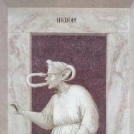
Biathlon IBU World Cup 2022 - 2023
heywoodu and one other reacted to Grassmarket for a topic
Also: it should be up to the athletes to test & choose their own skis. No more having squads of roadies doing it for you.2 points -
Remember , & (or was it ?) will be battling for the bottom. Just kidding, let’s hope for a good result for everyone.2 points
-

Totallympics Annual International Song Contest 2023
Olympian1010 and one other reacted to Cobi for a topic
Any ideas for the Team Event format? I had this but I don't really like it, so it would be great if we can find a good format. For each session, teams get points according to their position in that Session (doesn't matter if the first team scored 70 or 45 points, just the ranking). Each team can have one discard per Session (two for Madrid and Barcelona because of having 5 nations), so the points of the first 3 nations of each team are added to have the overall score of the Session. The scoring nations may vary between sessions (if Nation A is the discard of the team in Session 1, Nation A can still score points for the team in Sessions 2-4) and the final score would be the sum of the four Sessions. The reason why I don't like it is because I find the system a little bit pasive (just an update at the end of each Session). To make it more interesting maybe we could add power-ups (at the beginning of the Session, one user could randomly pick one card that would impact the Session. There would be 4 cards, one per session. 2 of them will have no consequences, 1 will double the points obtained during the Session and the last one will consider the 4 best nations of the team for the overall score of the team instead of the top3 as usual). Another option to make it more dynamic would be to include bonus points at the end of the event. For example, the best 3 teams in several categories (highest streak of juries receiving a combined 10 points, most points scored from a single jury...) would be awarded additional points. We can have 4 categories and have all of the them give points or maybe use the format of Mario Party games where one category is randomly selected and it's the only one to give extra points (but we wouldn't know which one until the Closing Ceremony).2 points -
Hi! I’m so excited for tomorrow’s show. I will be online all the day except for a little bit of AM. I will get home visit to check my teeth. Look out I will then bite if you don’t vote correct2 points
-

Fencing 2023 Discussion Thread
Biathlonfan and one other reacted to heywoodu for a topic
Why cancel, exactly? I mean, other than a protest, which ends up only hurting every single fencer now (because they lose a competition), instead of only those from Russia and Belarus, and thus mostly seems to be a silly thing to do. It's not like FIE's decision would have changed the competition in any way, since the RUS and BLR fencers wouldn't have been able to get there anyway.2 points -
Nice journey through music history. Great idea, well done @Cobi and now let everyone earn point(s) tomorrow and let the best win Good luck everybody1 point
-

Totallympics Annual International Song Contest 2023
Cobi reacted to Olympian1010 for a topic
I really like that artistic segment. That grand finale though1 point -

Totallympics Annual International Song Contest 2023
Cobi reacted to Olympian1010 for a topic
Possible options for rankings: 1st highest team member only, 2nd highest team member only, 3rd highest team member only, 4th highest (last) team member only, top two team members combined, top three team members combined, highest and lowest team members combined, two lowest team members combined, whole team combined1 point -

Totallympics Annual International Song Contest 2023
Cobi reacted to Olympian1010 for a topic
@Cobi if we’re doing the cards between rounds gimmick to spice things up, I think I would be fun to have a card where only the worst placed nation on each team counts for the scoring for that session (sort of a best loser scenario)1 point -
Yeah, I have something to do in the morning, but will try to return as quickly as possible1 point
-

Totallympics Annual International Song Contest 2023
Cobi reacted to kungshamra71 for a topic
I was a big fan of cadena dial (don’t judge me haha, but they were the ones that always were passing Spanish music and this was in a pre-youtube era and at that time it was the only way to listen to Spanish songs when traveling through Spain ) so that sentence is really stuck in my brain forever xD1 point -
I can't wait on tomorrow contest!!! TAISC fever is starting. How about you?1 point
-
R.I.P. Valencia Tortoises We're bats now1 point
-
Katinka Hosszu announced her pregnancy.1 point
-
You know the event is dead when even the host nation Andorra didn't enter their best.1 point
-
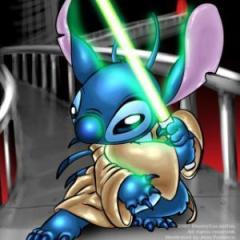
Men's Volleyball FIVB Olympic Qualification Tournaments 2023
Roamingrover86 reacted to Gianlu33 for a topic
My predictions A: Brazil and Italy. It's hard to see a dark horse, it's a pretty close pool B: Toughest pool, Japan, USA, Serbia and Slovenia will compete for two spots. This will be really fun C: China and Poland. The dark horse is Netherlands if the old team will back, but without Guidetti the Netherlands team isn't the same1 point -

Equestrian Qualification to Summer Olympic Games Paris 2024
Gianlu33 reacted to JoshMartini007 for a topic
>67% average in eligible Grand Prix events and a Level 4 judge from a different nation than the rider must give a score of >67% in the same event. To get the full certificate of eligibility the rider/horse pair must do this twice.1 point -
World Cup Finals in Soldeu (AND) Mixed Team Parallel Event: 1. Norway (Stjernesund/Windingstad/Tviberg/Haugan) 2. Switzerland (Rast/Simonet/Ellenberger/Bissig) 3. Austria (Gritsch/Gstrein/Scheib/Pertl) Full Final Result HERE1 point
-
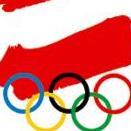
Ski Jumping FIS World Cup 2022 - 2023
justony reacted to Monzanator for a topic
Ski Flying for women in Vikersund (no World Cup points). Here's the Raw Air Top 15 (Julia Muehlbacher resigned and Yuki Ito who was DQ in Lillehammer replaced her).1 point -

Women's Tennis WTA Tour 2023
maestro reacted to Monzanator for a topic
Indian Wells 1000 SF (three of the four semi-finalists are reigning Grand Slams champions): Iga Świątek (1) vs Elena Rybakina (10) Maria Sakkari (7) vs Aryna Sabalenka (2)1 point -
GRANADA LYNXES Granada is a city located in the southern region of Andalusia, Spain. The history of Granada dates back to the 8th century when it was founded by the Moors as a small fortress town. However, it was during the Nasrid dynasty (1238-1492) that the city experienced its greatest period of prosperity and growth. It was during this time that the Alhambra Palace, the city's most famous landmark, was constructed. The Alhambra Palace is a magnificent example of Islamic architecture, and it is considered one of the greatest architectural treasures in Spain. It was built in the 14th century as a royal palace and fortress for the Nasrid kings. The palace complex includes beautiful gardens, courtyards, and fountains, as well as several ornate rooms and halls decorated with intricate stucco, tilework, and wood carvings. In the 19th century, Granada experienced a revival thanks to the Romantic movement and the interest in Moorish art and culture. The city became a popular destination for artists, writers, and intellectuals, who were fascinated by its rich history and its architectural and artistic heritage. Today, Granada is a vibrant and lively city, renowned for its cultural richness and its exceptional architecture. In addition to the Alhambra Palace, the city is home to many other historical and cultural landmarks, such as the Generalife gardens, the Cathedral of Granada, and the Albayzin neighborhood, which is a UNESCO World Heritage site. The Iberian lynx is a wild cat species that is native to the Iberian Peninsula. It is one of the world's most endangered feline species, with an estimated population of only around 1300 individuals left in the wild. The Iberian lynx is a medium-sized cat, weighing between 10 and 15 kilograms (22 to 33 pounds). It has distinctive tufted ears, short tails, and spotted fur that helps it blend in with its surroundings. The lynx is a solitary and territorial animal that prefers to hunt at night, feeding mainly on rabbits, but also on other small mammals, such as rodents and birds. In recent years, conservation efforts have been made to protect and conserve the Iberian lynx population. As a result, the population has slowly increased, and the species has been downgraded from Critically Endangered to Endangered on the IUCN Red List of Threatened Species. TYPICAL FOOD: Granada, being located in the southern region of Andalusia, has a cuisine that is influenced by both Spanish and Moorish flavors and ingredients. Some typical dishes of Granada include: Tortilla del Sacromonte: A Spanish omelet made with eggs, potatoes, onions, and various meats, such as chorizo, blood sausage, and lamb brains. Gazpacho Andaluz: A cold soup made with tomatoes, peppers, cucumbers, onions, and bread, and flavored with garlic, vinegar, and olive oil. Plato Alpujarreño: A hearty dish made with potatoes, peppers, sausage, and fried eggs, often served with bread. Piononos: A sweet pastry filled with cream and sprinkled with cinnamon. Salmorejo: A cold tomato soup similar to gazpacho, but with a thicker consistency and garnished with hard-boiled egg and ham. In Granada it is a tradition that when ordering a drink (especially beer) in a bar, it is accompanied by a free tapa. MEMBERS OF THE TEAM: INDIA @Fly_like_a_don TUNISIA @amen09 FRANCE @Benolympique @Bohemia CHILE @ManuCHIL1 point
-
Men's Football UEFA European Champions League 2022 - 2023
heywoodu reacted to AsensioWillemsen for a topic
From the top of my head it was 2006, the decline wasn't that incidental after all. Ironically, it was Juventus who carried Italy through mostly in these years (at least since Inter won in 2010), but now they are out early and again in some serious exterior troubles.1 point -
PAMPLONA BULLS Pamplona is a Spanish city located in the autonomous community of Navarre. It has a long history dating back to Roman times when it was known as Pompaelo. During the Middle Ages, Pamplona was an important commercial and cultural center, and the capital of the Kingdom of Navarre. The link between Pamplona and bulls dates back to the 14th century when the first bullfights were held during the city's patron saint festival, San Fermín. The festival became famous thanks to the novel "The Sun Also Rises" by Ernest Hemingway, which described the running of the bulls through the streets of Pamplona. During the San Fermín festival, which takes place in July, bulls are released into the streets and run alongside daring participants. When visiting Pamplona you have to go to: Plaza del Castillo: This is the main square of the city, surrounded by historic buildings and lively cafés. Cathedral of Santa Maria: This Gothic cathedral dates back to the 14th century and is located in the heart of the old town. Citadel of Pamplona: A 16th-century fortress located in the center of the city, built to defend against French invasions. Plaza de Toros de Pamplona: This is Pamplona's bullring, which hosts bullfights during the San Fermín festival. The Walls of Pamplona: These ancient walls date back to the medieval period and surround the old town of Pamplona. TYPICAL FOOD - LOS PINTXOS: Pintxos are small snacks or appetizers that are a popular culinary tradition in the Basque Country, including Pamplona. The city has a lively pintxos scene, with numerous bars and restaurants serving up a variety of delicious pintxos. Some of the most popular pintxos in Pamplona include: Gilda: This pintxo consists of a skewer with olives, anchovies, and pickled peppers. Tortilla de patatas: A classic Spanish dish, this pintxo features a thick potato omelet cut into small squares. Croquetas: These are small fried balls made with a béchamel sauce and various fillings, such as ham or seafood. Txistorra: This is a type of Basque sausage often served grilled or sliced as a pintxo. Bacalao: Salt cod is a popular ingredient in many Basque dishes, including pintxos, often served with garlic or tomato sauce. In Pamplona, pintxos are often enjoyed with a glass of local wine or cider, making for a delicious and authentic culinary experience. MEMBERS OF THE TEAM: KAZAKHSTAN @Ruslan IRELAND @OlympicIRL USA @Olympian1010@owenp_23 @dezbee2008 CZECH REPUBLIC @Hipooo1 point


